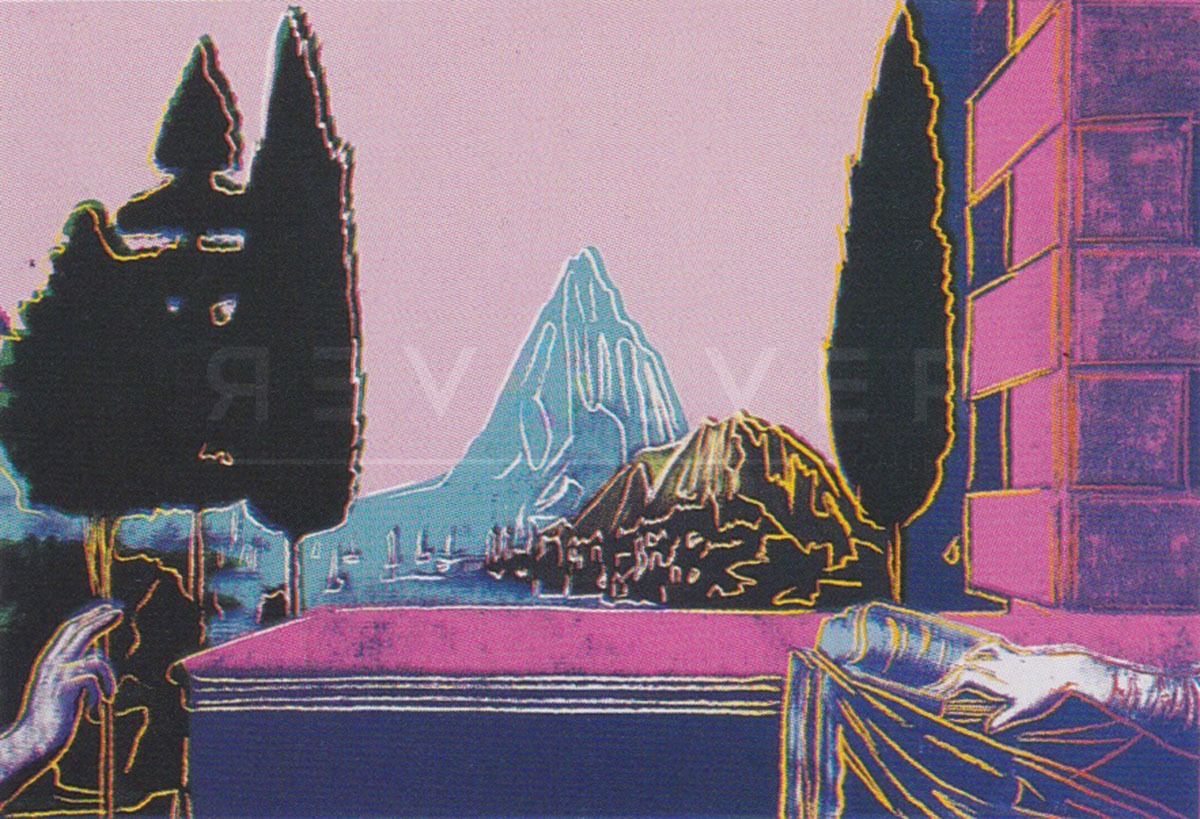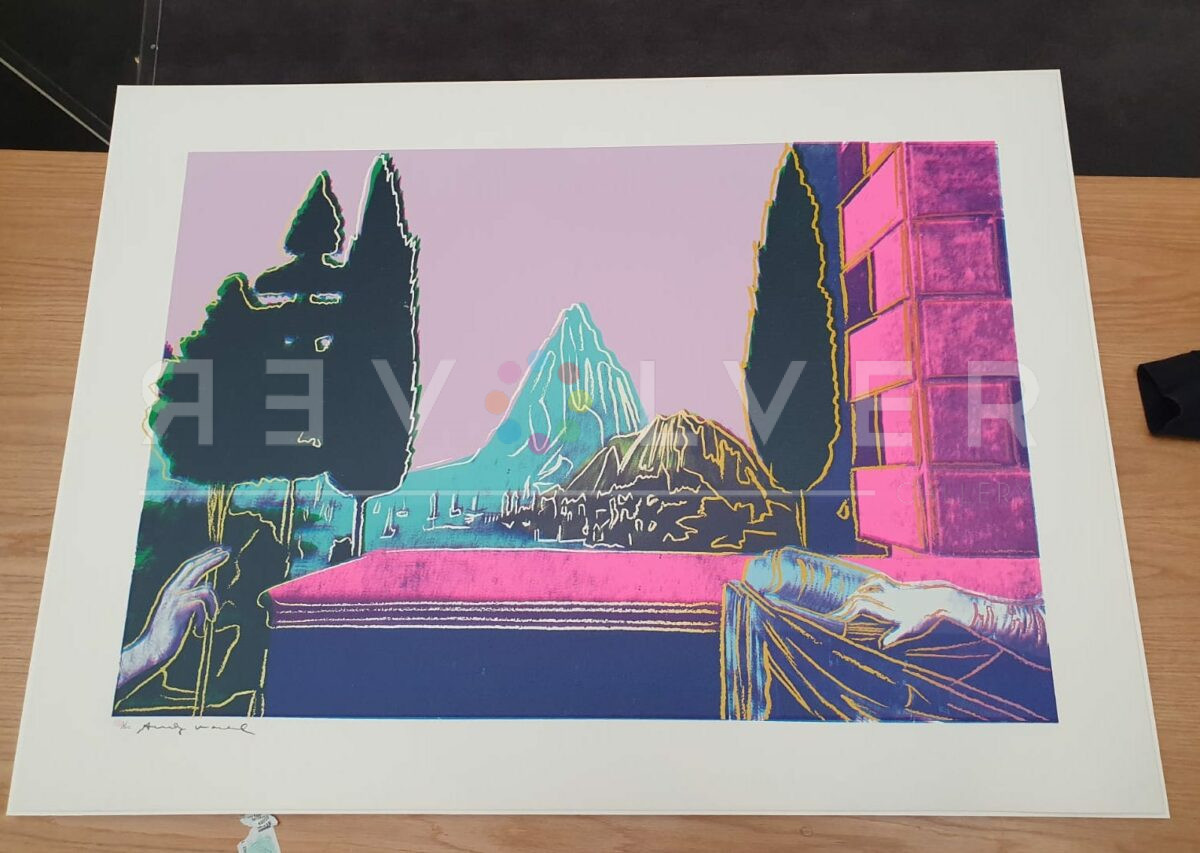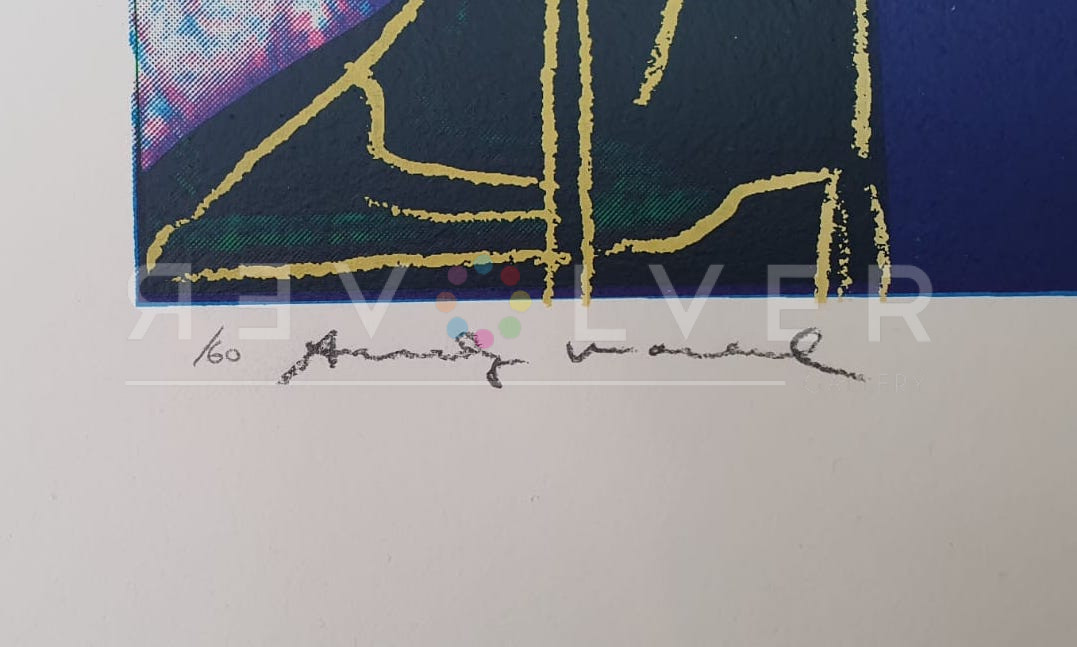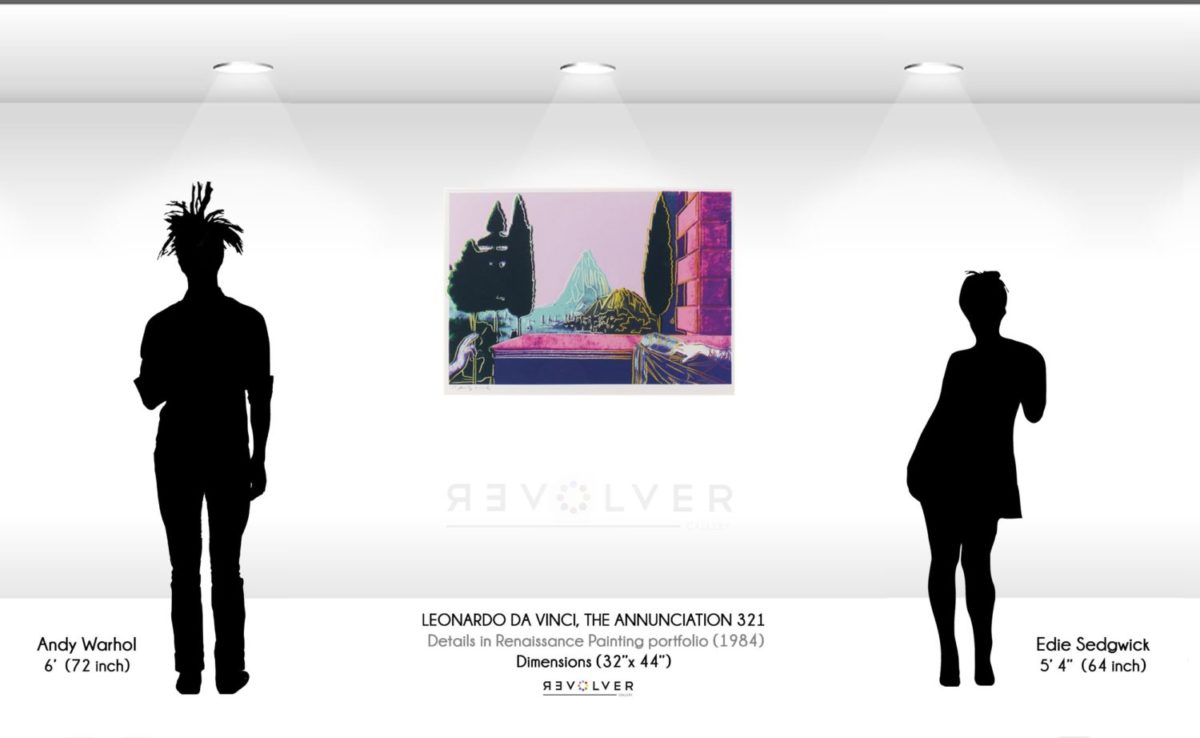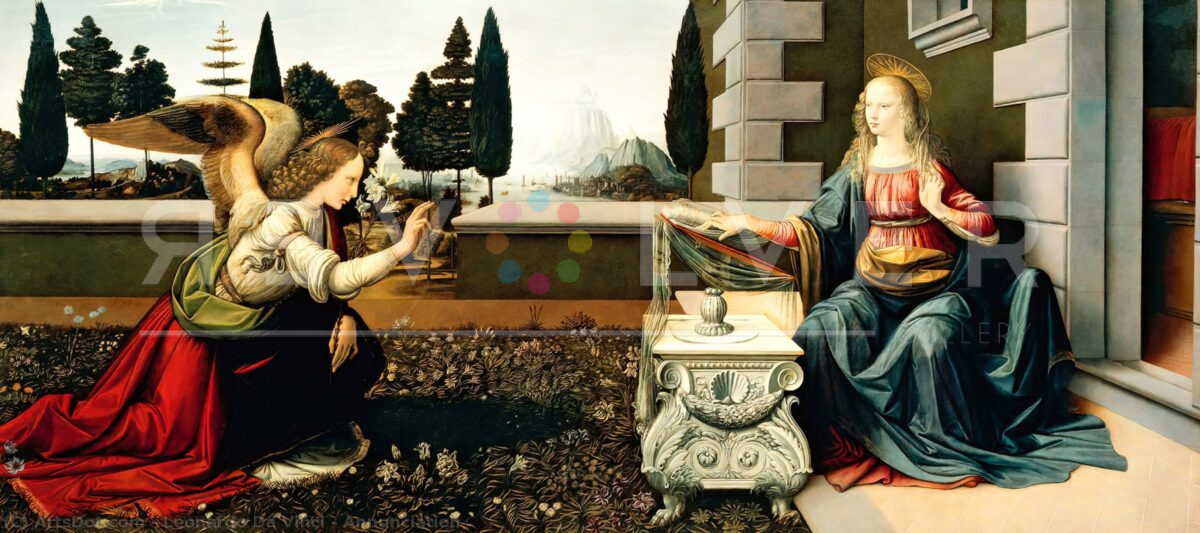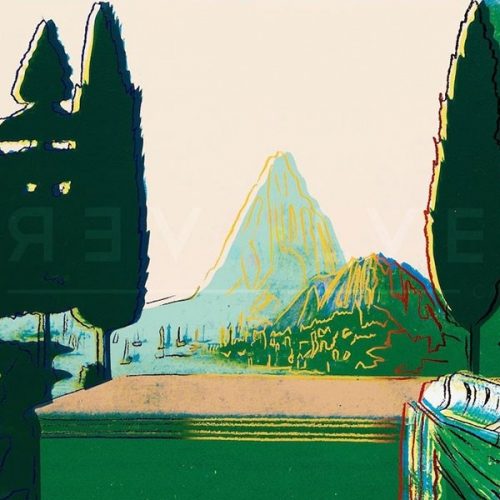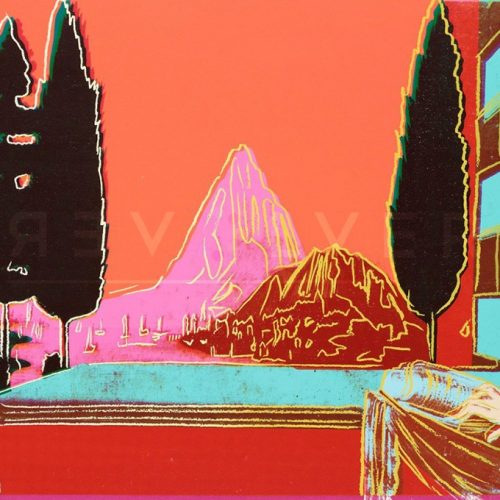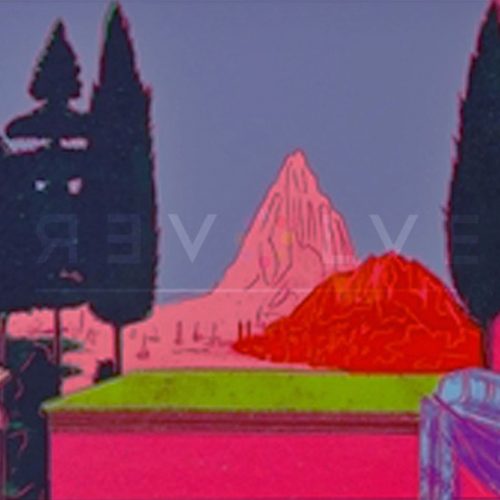Leonardo Da Vinci, The Annunciation 322 is part of a series of four screenprints and a part of Warhol’s portfolio entitled Details in Renaissance Paintings, which includes other works such as Birth of Venus and Madonna Del Duca. Warhol selected these Renaissance pieces for his new series to offer a contemporary angle with his signature styles to these iconic historical pieces. By adding cooler shades of pinks and blue alongside hand-drawn lines, Warhol recreated The Annunciation in his own version of four screenprints. This brought new significance that helped remind viewers of these great pieces from the Renaissance era. However, by adding Pop art techniques, Warhol redefined them by shedding a different light on Da Vinci’s piece from a different perspective.
Leonardo Da Vinci, The Annunciation 321 by Andy Warhol as Part of His Larger Body of Work
Warhol took different pieces of classical art from the Renaissance period and transformed them into pieces of modern Pop art. He used Pop Art movement techniques such as silk screening and printing to efficiently produce and color his prints. He also narrows the focus of his pieces to a specific portion of the original painting to offer a more specific emphasis. For his version Da Vinci, The Annunciation 321, Warhol zooms in on the landscape in between angel Gabriel and Mary’s hands.
Photo credit: The Annunciation by Leonardo da Vinci, c. 1472–1476, oil and tempera on poplar panel, 98 cm × 217 cm (39 in × 85 in), located at the Uffizi Palace in Florence, Italy. Courtesy of Wikipedia.

